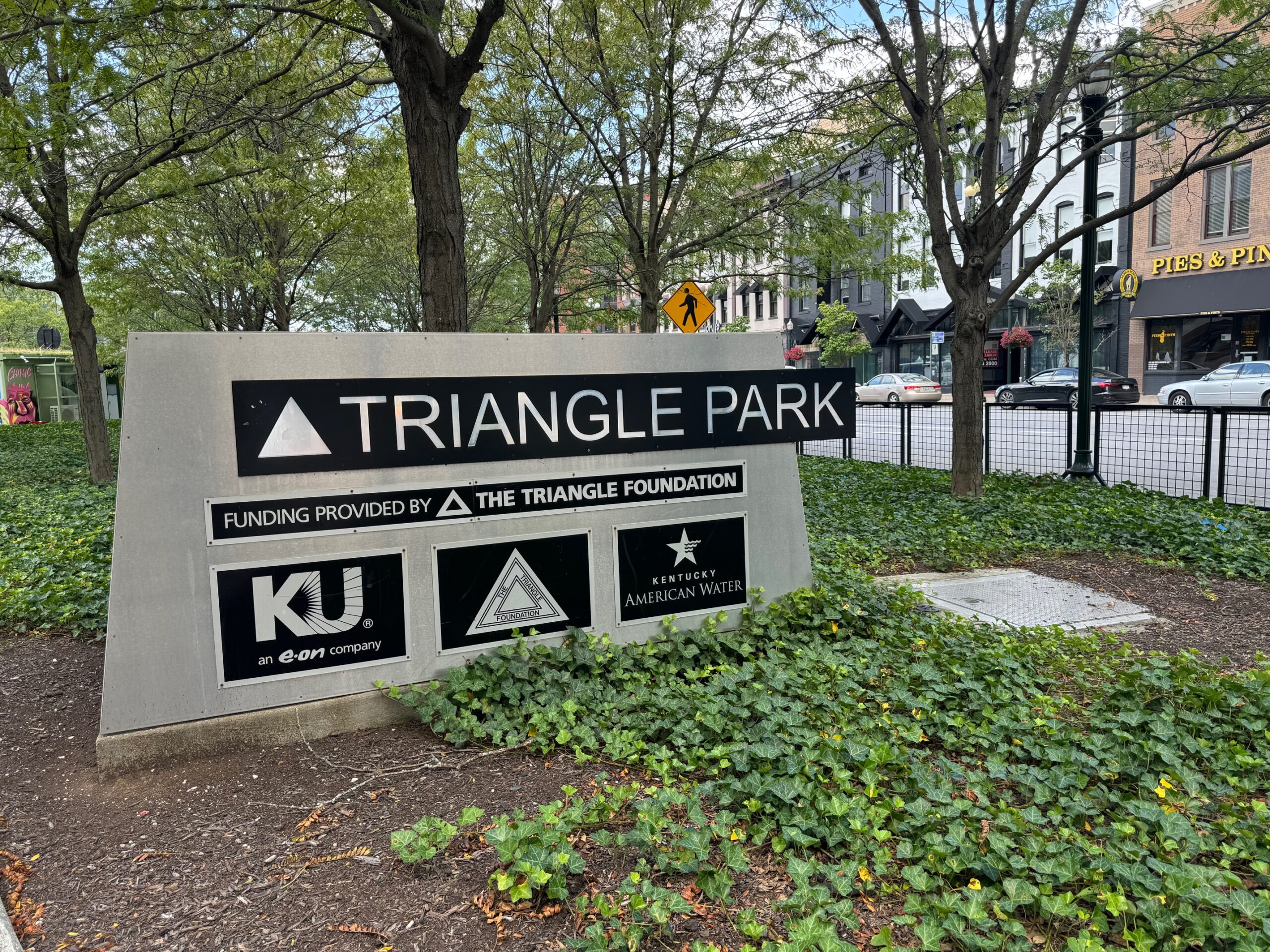Thoroughbred Park is the space that defines Lexington’s devotion to and dominance in the equine world. The park infuses the viewer with the depth of that devotion through statuary and forty-four plaques honoring the men and women who spent their lives breeding, training, racing and owning of those magnificent animals. Sculptor Gwen Readon’s twelve exquisite bronze statues, including the nineteenth century’s greatest Thoroughbred stallion, Lexington, a splendid broodmare, frolicking foals with one at rest and seven horses racing, capture the essence of the sport amid fountains, flowers and landscaped entities symbolic of the Triple Crown of Thoroughbred Racing: the Kentucky Derby, the Preakness and the Belmont.
The location of the park, at the intersection of East Main Street and Midland Avenue, is emblematic of the early straightaway races pioneers held on Lexington streets in the 1780s. Reardon’s bronze rendition of the Thoroughbreds racing, with their jockeys cleaving the wind as they urge their mounts to expend every ounce of their massive energies to reach the finish line first, creates a scene that leaves one rooted in breathless wonder. The spell is so binding that traffic noise fades into a faint recollection of the bugler’s call to the post. The history, the nostalgia, the people and the horses are all in Thoroughbred Park, one of four parks developed by Triangle Foundation, Inc. Thoroughbred Park is one of the world’s most unique cultural and historic landmarks. Never before has a more stunning tribute been made to the beloved horses, its owners and breeders for their innumerable contributions to a region. The 2.75 acre public park is divided into five major areas, each a lifelike vignette from the world of racing. Nestled within this peaceful, treed quarter-acre setting, an outdoor museum commemorating racing’s best and brightest starts–both human and equine. Dedicated to Lexington, on of Thoroughbred’ racing’s most revered champions, this beautiful site showcases a half-size bronze statue of the 19th-century stallion who for sixteen years was America’s leading sire.
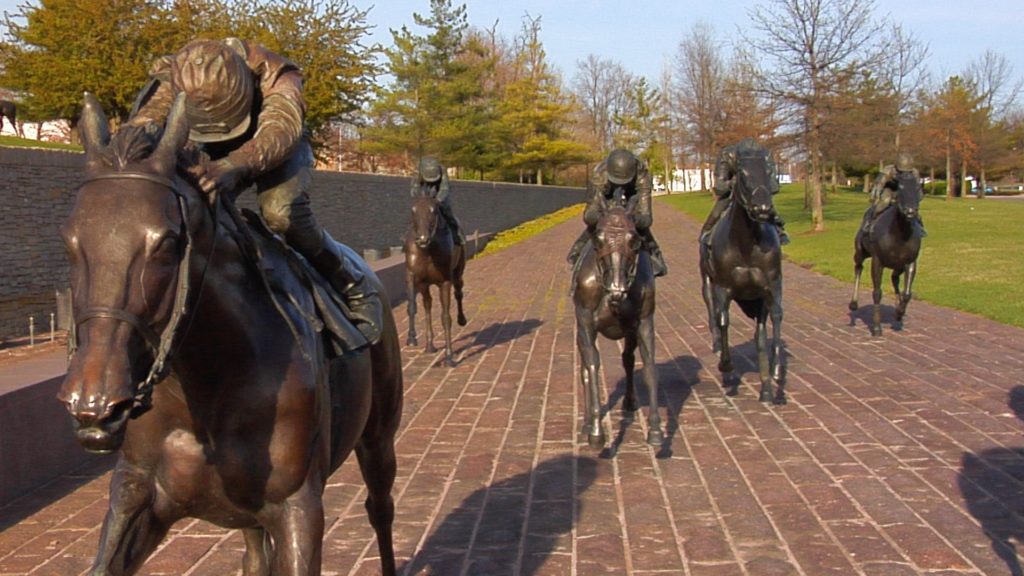
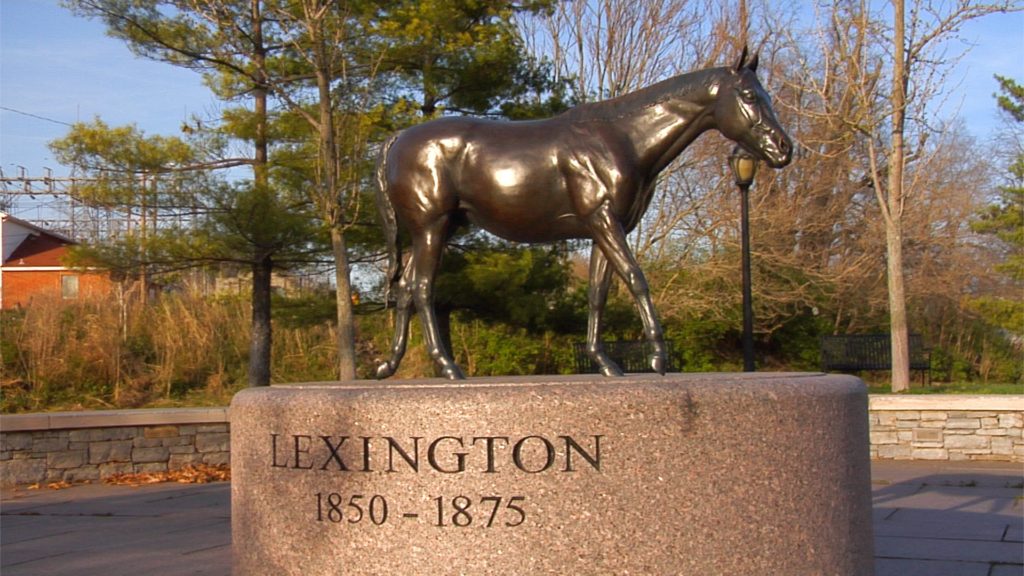
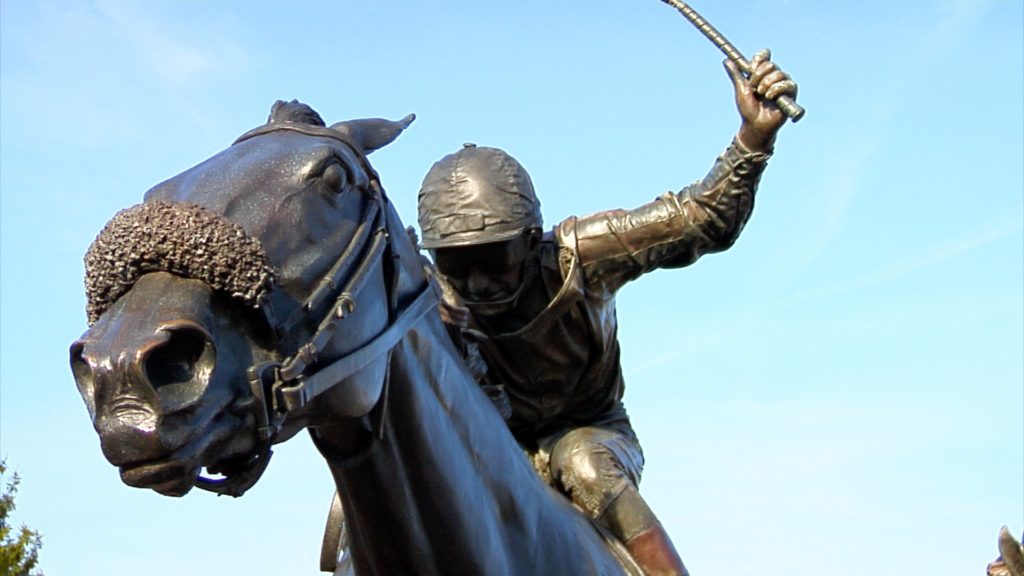
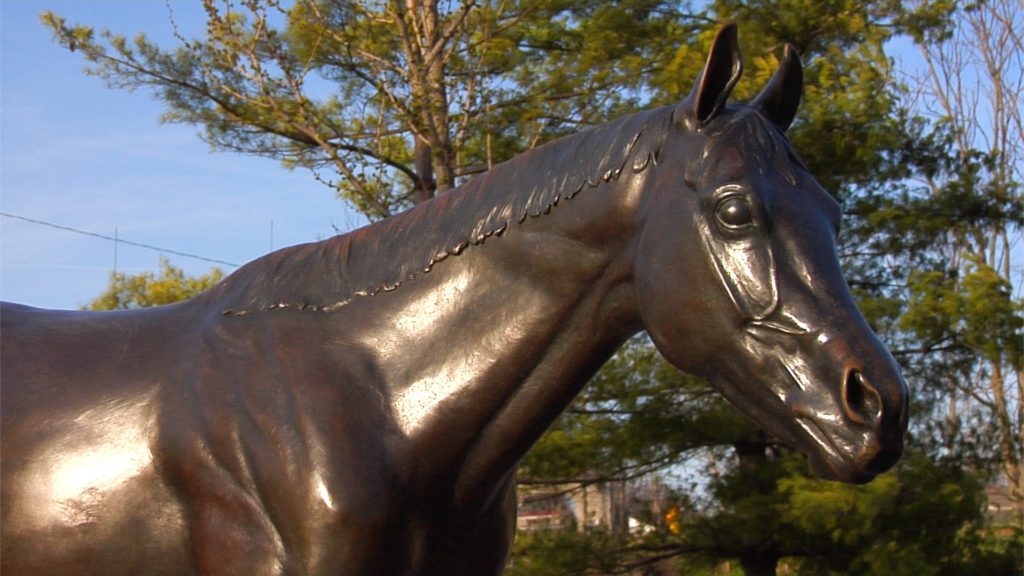
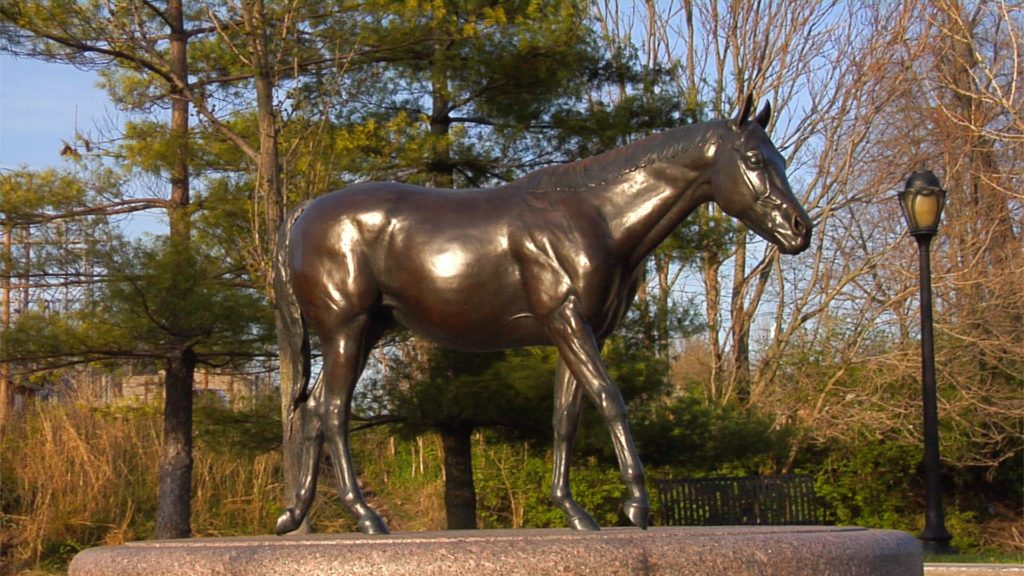
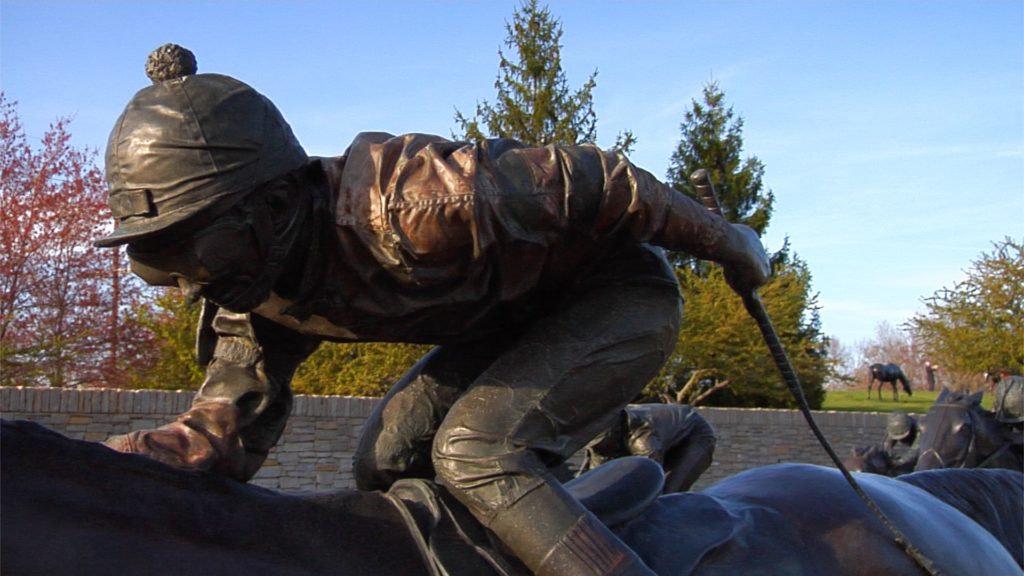
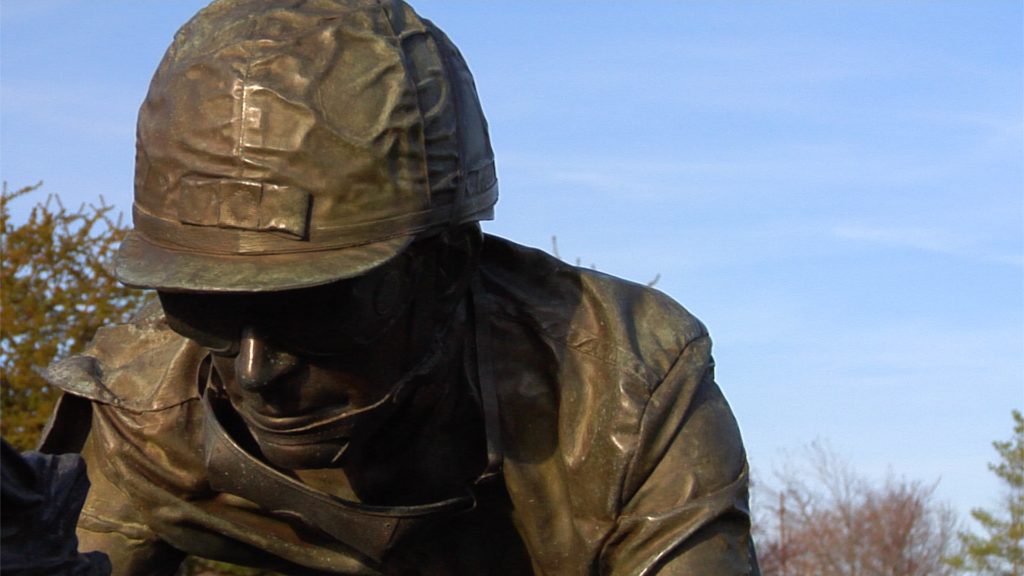
THE MEADOW
Deciduous and evergreen trees accent this multilevel oasis in which bronze mares and foals “frolic” as visitors stroll along walkways or enjoy the view from inviting seating areas. A handcrafted stone wall reminiscent of those found on traditional Bluegrass horse farms separate the upper and lower portions of The Meadow.
THE TRACK
Here the excitement of racing springs to life as seven life-size bronze Thoroughbreds and jockeys “race” toward the finish line on a track similar in appearance to a real one. Willie Shoemaker, Pat Day, Chris McCarron, Randy Romero, Don Brumfield, Jerry Bailey and Craig Perret–they’re all there, sporting bronze racing silks cast from actual silks donated by prominent stables.
THE WINNER’S CIRCLE
In an immortal photo finish, two bronze champions strain neck-and-neck toward an imaginary wire at the west end of the park. In addition to these dramatic statues, The Winner’s Circle sports a large flower bed, a pool — part reflection, part powered by water jets, and a granite plaza.
ABOUT THE SCULPTOR
For some, horses are a profession but for the best equine sculptor in the world Gwen Reardon they are an avocation that is all consuming. Her interest in horses began when, as a small child, she accompanied her horse trainer father to work, faithfully sitting out of the way on bales of hay and straw waiting for the promised ride at the end of the day. Those promised rides led her to riding world champions and showing horses at the International Livestock Exposition, in Chicago. She never saw a horse that she did not love, even the milk wagon horses of her youth, and went on to spend forty years as a farm manager and trainer. That was not enough for Gwen Reardon. She turned those toy horses, made out of mud with straw tails, into an astounding career. She enrolled in classes taught by University of Kentucky art professor John Tuska. Fascinated not only with the saga of the great stallion, Lexington, but his confirmation and breeding records made him her first equine model. Her first stop was the Smithsonian, where his skeleton was then on display. She spent hours painstakingly measuring every aspect of what had been Lexington magnificent body, sculpted it into clay, carefully smoothed each rippling muscle by hand and had the quarter-life statue cast in bronze. Success as a sculptor did not come overnight. After finishing the statue of Lexington, she carried it around in her van hoping to find a buyer. She eventually met Alex Campbell, chairman of the Triangle Foundation. He liked Lexington and engaged her to sculpt horses for Thoroughbred and Equestrian Parks to honor Lexington’s Thoroughbred heritage.
EXPANDED HISTORY
Entering Thoroughbred Park from Midland Avenue, there is the statue of Lexington, on a stone pedestal in a semi-enclosed limestone circle. Lexington (Boston—Alice Carneal by Sharpedon) was bred by Dr. Elisha Warfield and initially named Darley when he was foaled in 1850. Warfield raced the colt twice in partnership with a well-known Black trainer and former slave, Henry Brown. Since Brown could not enter the three-year-old in his name, Warfield raced the horse in his silks. Darley outdistanced his opponents by winning two straight heats in the first race, a mile, and two of the three heats in the second event of two miles. Warfield, after the second race, sold Darley to a Richard Ten Broeck and his three partners, General Abraham Buford II, Junius R. Ward and Captain Willa Viley. Ten Broech was from a prominent New York family. Buford, a West Point graduate, was a Woodford County native and Ward was a wealthy cotton broker who had similar mansions in Georgetown and Erwin, Mississippi. Viley, who helped lay out the Lexington Association Track in 1826, owned Stonewall Stock Farm, which was adjacent to the farm owned by Buford’s father. The four men paid Warfield $2,500.00 for Darley, and promptly changed his name to Lexington. The stallion raced in seven contests, from Louisiana to New York, won six and placed in the other. Like his sire, Boston, Lexington began going blind as a five-year-old. He stood at stud at W. F. Harper’s Nantura Stock Farm in Midway for two seasons. Robert A. Alexander paid Ten Broeck $15,000.00 for the stallion in 1856 and moved him to his Woodburn Stud, which later became America’ foremost breeding establishment. Alexander’s father, also named Robert, while still in his teens, had been Benjamin Franklin’s secretary when he was minister to France. Upon Franklin’s advice, Robert Alexander purchased a vast rack of land in 1790 along Elkhorn Creek in Woodford County and passed it one to his four children. His eldest son, Robert A. Alexander, purchased his siblings’ share. Called the “Blind Hero of Woodburn,” Lexington thrived under Alexander’s guidance. For sixteen years, fourteen of them consecutive, Lexington was the nation’s leading Thoroughbred sire. Woodburn Stud remained Lexington’s home for the rest of his life with the exception of the Civil War years, when Alexander shipped his breeding stock, including Lexington, to Illinois, to protect them from raiders. Lexington died, in 1875, at age twenty-five, but his legacy lives on, even today, in his get. In 2010, the lineage of three Kentucky Derby contenders, Sidney’s Candy, Homeboykris and Super Saver, were traced back to Lexington, the Blind Hero of Woodburn.
